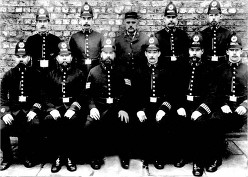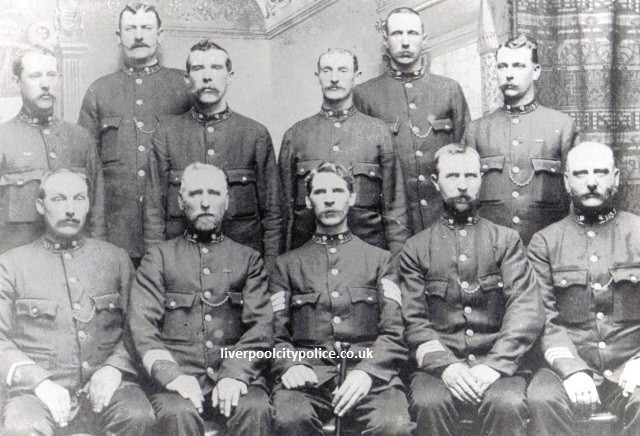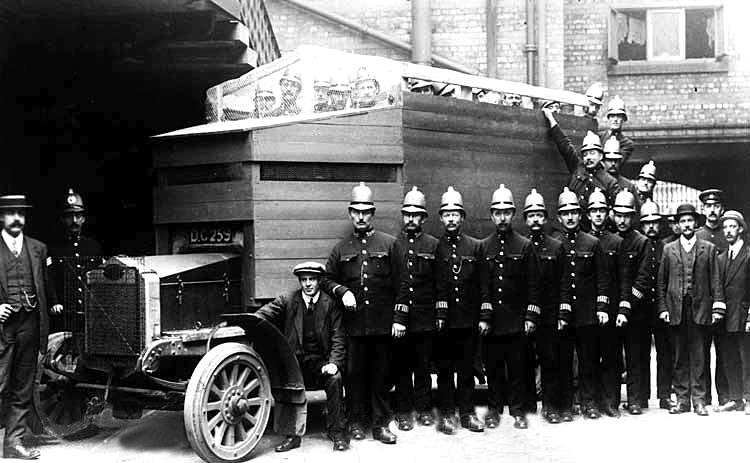X-RAY UNIFORM 27 by shaun rothwell, retired
X-RAY UNIFORM 27 —- circa 1911
There are two events that are milestones in the Policing of Liverpool. The first was the Transport Strike of 1911 and second was the Police Strike of 1919. On both occasions the “Kings Peace” was greatly disturbed, as Riot was the order of the day.
Bobbies learn their craft; it is something that cannot be taught. In the present day we call it “Experiential Learning” – learning by experience. The experiences learnt in 1911 gave the Head Constable, Francis Caldwell and his successors a good start for his response to the events of the Police Strike of August 1919 and beyond. On both occasions “Mutual Aid” was requested and given by the likes of Birmingham City. Sadly in 1919 955 Liverpool Officers from 1700 strength “refused duty”. Liverpool’s dispute was over draconian conditions not pay.
In 1919 the Riot Act was read, for the last time in the England, from an Army vehicle in the Walton district of Liverpool

The tactics used were basic but very effective. The “armoured lorry”, as it was known, would drive the mobile reserve to the “hot spots”; Officers jumped out and a baton charge was used to clear the street. Many Rioters thought they had a safe avenue of escape by using the “jiggers” (alleyways) but to their horror they were greeted by baton wielding members of the C.I.D. Many people were left with “Baton Rash”. As shops had been looted and the City had been teetering on the verge of anarchy – the City Fathers were not inclined to listen to complaints of THEIR police being heavy handed.

The first photograph above was taken in one of the courtyard of Police Headquarters, Dale Street, Liverpool In the background, you can see the gates that enclosed the courtyard and made it secure. The courtyard faced onto Dale Street. Every night the Officer in the GEO would close and lock the gates. On many occasions the Bank of England Bullion van would arrive from London to find that the Castle Street Branch of the Bank of England was closed for the day. The Van and its load of bullion would spend the night locked in the Courtyard; One Bobby, a set of gates and a “Union” padlock to keep it safe.

In the late 1950’s Liverpool’s Police Headquarters moved to a former Blind school in Hardman Street. The courtyard and gates remained in place till the 1970’s when the Lord Chancellor decided to give Liverpool City Magistrates Court a makeover with a new entrance with its glass doors and Royal Armorial device.
All photographs were taken by company called Carbonora who in 1909 became the official photographer for Liverpool City Police photographing many events, passing – out parades and portraits of serving police officers. The company was responsible for photographing scenes of the 1911 transport strike and 1919 Police strike. After the 1911 strike Liverpool City Police seized many of the photographs taken by Carbonora because some depicted police officers baton charging crowds. Approximately eight of these photographs were destroyed by the police. In the 1940s Carbonara’s premises became a “Casualty of war”. It received a direct hit and was destroyed together with most of the pictorial history of City Force that perished in the ashes.
In the Second World War the the primary aim of Nazi Germanys Luftwaffe was put the Liverpool docks out of action. The effects of the aerial Armada on the people and the city of Liverpool were catastrophic. Due to enemy action the capacity in the docks was down to 30%. Had this fact been known to the enemy it would have given them fresh impetus to complete the task . There were many other casualties particularly in the civilian population and a large swathes of Liverpool were raised to the ground. So events in Liverpool and its neighbouring Borough were kept secret for fear of giving succour to the enemy. Yet the events even to this day, shrouded in mystery.
There is an irony in that the last bomb to drop on Liverpool was in 1942. A bomb from a single aircraft destroyed part of Stanhope Street with the loss of ten lives. Before the Second World War this was the home to Bridget Hitler; Adolf Hitler’s sister-in-law.
The idea of a mobile reserve was utilised again during Second World War. As units of US Serviceman started to flood into the UK in 1942. Battles between GIs was not unusual; fights between black and white soldiers being the most serious.
After the 1981 riots the issue of public disorder was on the agenda of most of the large provincial forces. The outcome was tactics not to dissimilar to those used in 1911 and 1918; where protected personnel carriers took Officers within yards of the Rioters. Though batons were not used as indiscriminately as in the past. It took the Disorder of 2011 before Metropolitan Police used the “Carrier Tactics” . In some quarters it was even suggest that they, the Met, had formulated the tactic.
In the early years of the 21st Century X-RAY UNIFORM 27 was a call sign on one of the protected carriers of the Support Group.
Shaun R. Rothwell
Inspector
Merseyside Police (Retd)
April 2013


